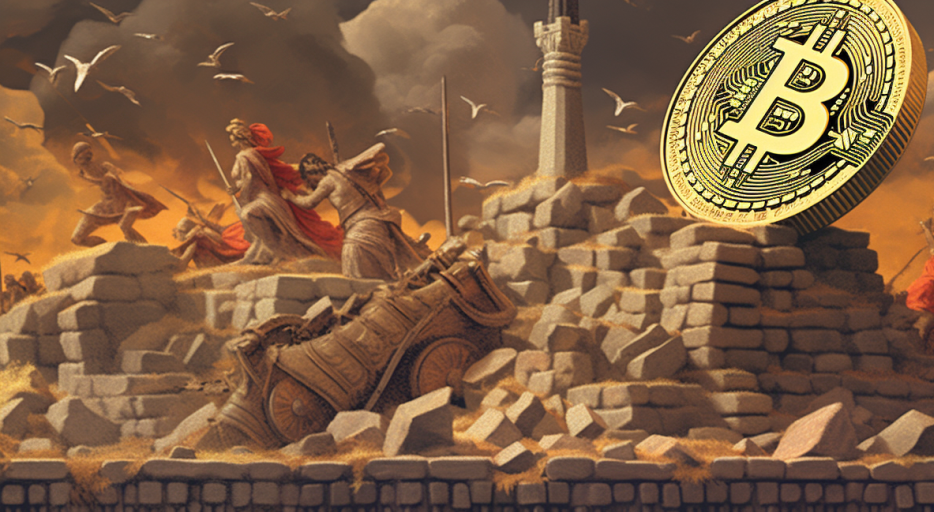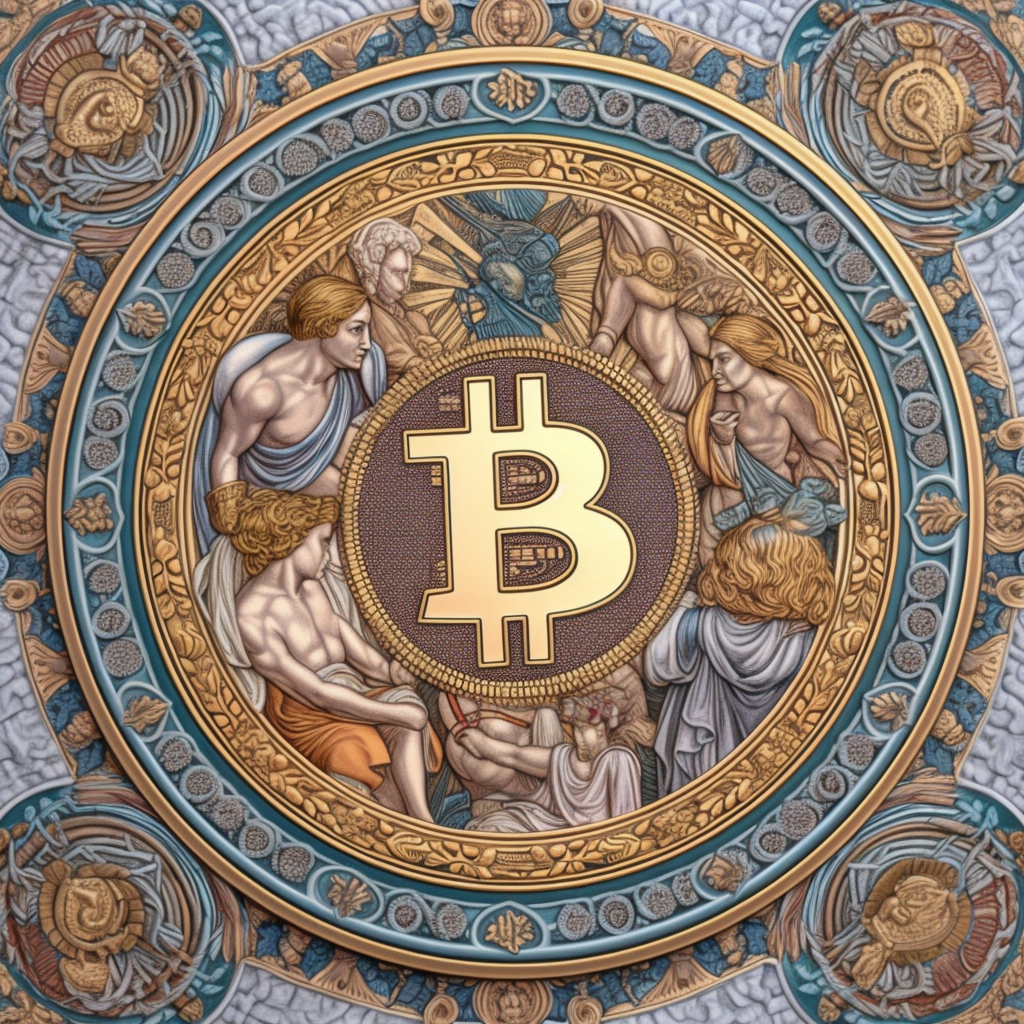
6 minute read
THE DEBAUCHERY OF CURRENCY - A Bloody History of Money
THE CURRENCY WARS
This book traces the history of money through examples in the Agrarian Age, Industrial/Manufacturing Age, and Information Age. In each era, monetary policy and its effects on currency are intertwined with the nature and objectives of political and economic warfare.
Advertisement
With the Information Age, we enter a realm of virtual money based on data, and bloodless warfare based on the corruption of information. As Elon Musk put it, “Money is just data that allows us to avoid the inconvenience of barter.” Warfare in the Information Age manifests as asymmetric conflict with the goal of information superiority. Information superiority involves not only obtaining accurate and timely information but also denying or misleading adversaries. Not surprisingly, then, cyber warfare and economic sanctions have emerged as tools that can disrupt or manipulate currency and financial systems to achieve strategic objectives. If money is just information, then money is now simultaneously an objective and a weapon.
Russia, in turn, is coordinating with like-minded countries like Brazil, India, and China along with others like Saudi-Arabia and South Africa (the BRICS nations), to intentionally disconnect from the global dollar network and establish their own, presumably digital, currency. Blockchain technology makes this easier, but that does not necessarily translate into wealth creation. On the contrary, multi-currency systems have a history of failure, but not before they erode the economy into a system of chaos and decay.
The dollar's dominance is not at as much risk as people think. Acceptance plays a crucial role in giving money its value, and network effects are a key mechanism through which acceptance influences the value of a currency. The dominant currency is the one with the most users and supports the largest economic networks. Feedback loops create size, and this size creates value through convenience, establishing a Schelling point and lock-in. Once this dominance is secured, it is practically unbreakable.
Musk may be right that money is data for the convenience of exchange. And it is certainly true that money can be, and is, created from nothing. But money must also be the embodiment of work or some other economic sacrifice. If the data is modified in a way that dilutes the economic value of the work represented, then the money is debased and inflation is the result. If work is absent, then money carries no value.
The problem with representative money, particularly fiat currency, is that it expands too quickly. Governments not only have the authority to create and increase the money supply at will, but they also have the incentive to do so. In the modern economy, however, most money is created through private lending, with banks acting in their own interests without much regard for broader economic consequences.
Keynes warned that inflation by debasement “impoverishes many…enriches some.” Copernicus scolded Prussian government’s debasement for worsening the impoverishment of the lower classes: “[T]hose who are affected by this tremendous disaster...contemptuously despise it,” and sarcastically suggested the elites in government were pleased by “the cheapness of currency and the destruction of the country.” Gresham, Thier, Franklin, and so many others expressed the same sentiment. They did not need to read about it in a book. They witnessed it firsthand.
Money debasement is a vacuum that sucks wealth from the lower classes and deposits it in the coffers of the rich. The reason should be obvious: the poor must use more money to buy fewer goods of necessity, while the wealthy benefit from the increased indirect seigniorage the defiled currency brings.
The cycle of debt, debasement, revolution, and currency reform is a recurring pattern observed throughout history. It begins with the accumulation of unsustainable debt, which puts strain on the economy. To alleviate the burden, governments typically resort to debasing the currency, diminishing its value, and eroding public trust.
INFORMATION WARFARE: THE NEXT FRONTIER OF CURRENCY DEBASEMENT
As we witness the rise of digital currencies and the growing acceptance of technology in our financial systems, the battleground for currency success has shifted to the realm of information warfare. In the digital age, as in the past, the acceptance of a currency is crucial to its success. However, competing digital currencies, including Bitcoin, face the challenge of erosion in acceptance due to various tactics employed in the information warfare landscape.
With the emergence of CBDCs and the rapid growth of cryptocurrencies like Bitcoin, the competition for acceptance becomes fiercer. CBDCs, being issued and regulated by central banks, have an inherent advantage in terms of credibility and trust. However, the erosion of acceptance can occur through several avenues. Competing digital currencies may seek to discredit each other through negative narratives to create doubts about their viability and security. These tactics can erode public confidence and hinder acceptance.
Moreover, governments can be counted on to manipulate the value of their CBDC relative to other currencies to impact foreign exchange rates and destabilize the economy of a targeted country. By artificially devaluing their CBDC, they will undermine the value of the targeted country’s currency.
CBDCs represent the single greatest threat to human freedom since Communism. At the push of a button, authorities can and will impose limitations on the use of CBDCs, such as transaction limits, spending restrictions, or even time-bound expiration of funds. These measures will be used to exert control over individuals’ financial behavior, impede economic freedom, and restrict personal financial autonomy.
Bitcoin: The Currency of Crisis
Of all the possible use cases for Bitcoin, none has offered as much value yet been so underreported as its use in times of crisis. This is, in part, because most Bitcoin ownership is in North America and Europe. Western countries typically have well-established financial systems with stable currencies, robust regulatory frameworks, and government backed protections. As a result, the general perception is that traditional currencies and existing financial infrastructure adequately address crisis situations.
That is not the case in many other parts of the world. In 2023, the combined population of the ten countries with the highest inflation was over 400 million people. The average inflation rate in these ten countries was 60%.
In these countries, bitcoin isn’t just an option, it’s the only option. Gold is difficult to acquire and even more difficult to spend. Conventional financial market instruments and banking systems are at risk of failure. Real estate is costly and illiquid. Imagine the price of food for your family doubled every month. What possible other options do you have to preserve your wealth and income besides saving through Bitcoin?
An incredibly compelling case for Bitcoin as a currency of crisis has unfolded with the tumultuous context of the Russian invasion of Ukraine. Nearly $70 million worth of crypto donations have been made to Ukrainians since February 2022. This figure includes $28.9 million worth of Ether, $22.8 million in Bitcoin, and $11.6 million of Tether, all transferred to digital wallets amidst the ravages of war. Notably, the majority of these funds were dedicated to providing vital humanitarian aid to those displaced by the conflict.










